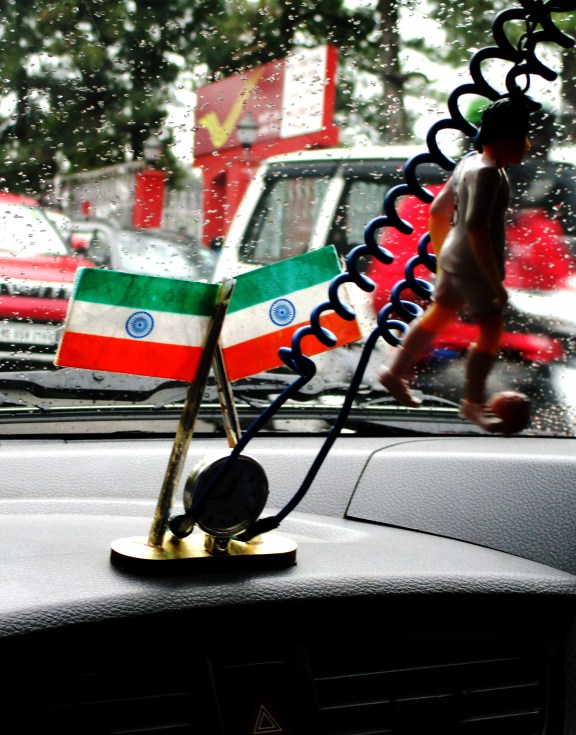Introduction
Where does evidence of a nation lie? Is it in songs bristling with the shrill tenor of patriotic fervour? Is it in the mishmash of tongues, dialects, and slang around favoured chai shops that constitutes a certain domestic patois? Does it lie in the collective roar that erupts each time the national team brings home a cricket tournament trophy, each time a brawny hero and a lithe heroine dance away to the joyful chorus of their orchestrated happy ending? Or does it rest at a curious crossroads of all these vagaries, cacophonous testament to a land carved through blood, shaped through brio, and existent in the surround-sound melodramas of soon-to-be two billion actors…
In ‘For and Against the Nation’, Anjum Hasan postulates that everyday urban proof of nation and nationhood is to be found through the very visual affirmation of symbolism—those flags, slogans, sprayings of graffiti, oddly-placed statues, and other errata that pockmark our metropolitan existence. Hers is no ordinary metropolis either, but the city of Shillong in the state of Meghalaya, part of a North-east that manages to pull off a daily tightrope walk—distanced from India, yet very much ensconced within the Indian chronicle; dissociated from everyday notions of patriotism, yet seemingly a hotbed of a different mien of partisanship. Miraculously enough, both of and without the country.
Hasan’s essay is one of brevity and sparseness, suggestion even. Photographs hint and nudge, but rarely paint the entire portrait. The words offer a milieu and its surface, without offering a clear conclusion or the minutiae of the matter. It is left to you, the reader, to roam. To fill in the blanks. To investigate the cracks. To draw your own inferences. And to forage for an answer that appears satisfying, perhaps even believable.
Bob Dylan once wrote—“And don’t speak too soon/ For the wheel’s still in spin/ And there’s no tellin’ who that it’s namin’.” In Shillong, it seems the wheel is even more of an enigmatic, unpredictable affair than usual. This visual narrative might be a good enough place to start.
Siddharth Dasgupta
The Bombay Literary Magazine
For And Against The Nation
There is no stranger place, and no better vantage, from which to view the nation than the North-east. Sitting in Shillong, I am struck by something I don’t notice in Bangalore—how so much of the daily news and political opinion from out there is pegged to “India”. From this welcome distance it can seem like an idea—one become indispensable to those who cleave and those who doubt. Out here things are, as Jim Morrison knew, simpler and more confused. It could be that the national is of little account and bow-and-arrow wielding local heroes stand taller. Sometimes, exceptions are actively, even aggressively, sought from the nation: the most common slogan in the city, and state, has for some time now been No ILP, No Rest—a call for the clamp of the Inner Line Permit as a way to keep this “out there” at bay.
Then again, and this I find is new, the nation can be reclaimed. Paeans to the defence forces (as much as cocking a snook at the defence forces) and flowers at the Mahatma’s feet on January 30 are familiar. Patriotic mottoes on city walls, noisy celebrations of azaadi, and statehood anniversaries are a recent propaganda. The tricolor swinging above taxi dashboards, affixed to shop counters, hoisted in church compounds, I’m seeing for the first time.
These photographs were taken in the unusual cold of early 2022, when a few precious hours of morning sun would soon give way to featureless leaden skies, the dull light showing up the implacably stiff statues and sullen graffiti. I walked to stay warm but also to try and find some grubby beauty in this dense and shifting urban forest of symbols and signs. On days when that reassuring azure did show up, even a flag half-heartedly flapping above the dirty pink of a boxy government building could seem new.
I
Contributor
 Anjum Hasan
Anjum Hasan
Anjum Hasan is the author of five books of fiction. Her new novel History’s Angel will appear next year. Her photographs have been published in Art India and Scroll. She is currently on a New India Foundation fellowship to write a book on Shillong.












